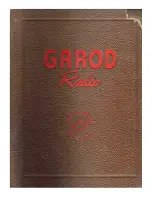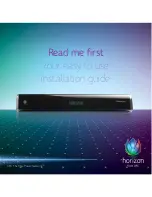
VEC-1320K/1330K/1340K/1380K Owner's
Manual
31
8. Key Jack:
1/4" jack accepts manual keys and most electronic keyers.
Antennas:
QRP operation requires a good antenna, but you don't need stacked
beams at 100' to get the job done! Most QRP enthusiasts use modest wire
antennas that have been carefully installed and tuned for minimum VSWR. It's
best to avoid compromised or severely shortened designs along with long lossy
feedlines and inefficient matching schemes. Like most of today's solid-state
radios, your transceiver uses a no-tune broadband output network designed to
match into 50-ohm loads. While it can tolerate a wide range of mismatches,
you'll get more usable power and better harmonic filtering with a low VSWR
load.
Experience has shown that a full-sized 1/2 wave dipole or sloper installed as
high as possible is hard to beat. The following chart suggests dipole wire lengths
for various CW sub-bands. These dimensions are sensitive to ground conditions
and near-by objects, so you may need to prune the length slightly to obtain
minimum VSWR at your location. Information is also provided for adding a
very low cost "choke" balun to your installation. A balun helps eliminate
unwanted feedline radiation on transmit and noise pick-up on receive. Heavy-
weight or premium cables are not required for QRP stations, and inexpensive
RG58 is sufficient to do the job. The lighter your coax, the higher you can pull
the center of your antenna.
Length
Band MHz.
Length
Per-side
80
3.6
130' 0"
65' 0"
40
7.1
66' 0"
33' 0"
30
10.1
20
14.05
46' 4"
23' 2"
33' 2'
16' 7"
Balun
20'
14'
10'
8'
Balun consists of RG58 coiled 10" in diameter and held with tape or plastic tie-wraps
Balun
#14 stranded-copper wire
For additional antenna information on a wide variety of HF antennas, consult the
ARRL Antenna Handbook, a publication of the American Radio Relay League
in Newington, Connecticut.
QRP Operating Tips:
Most QRP DXers agree the "hunt-and-pounce" method
works best. Rather than spending a lot of time calling CQ, look for other
stations calling CQ and answer them. Also, call stations that have just completed
a QSO and signed. When you
do
call CQ, you can usually expect more replies
around the QRP calling frequency where operators anticipate weaker signals.
Finally, never hesitate to call weak stations--they may also be operating QRP or







































